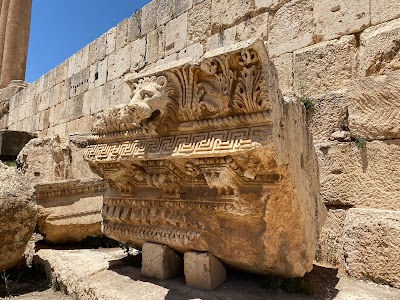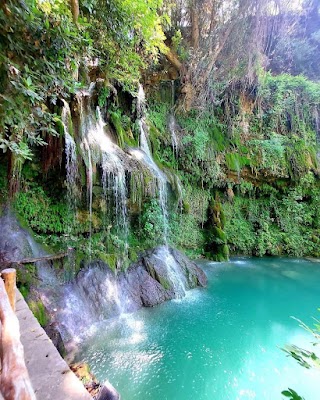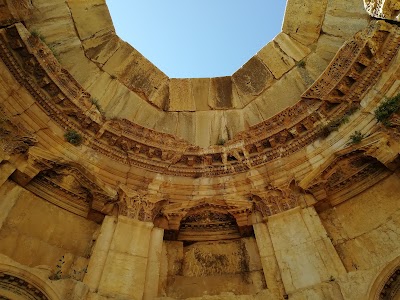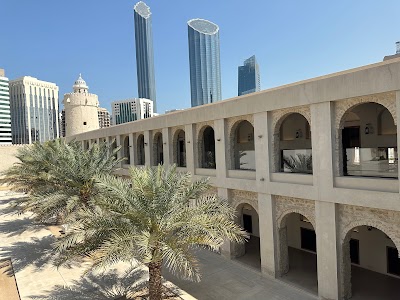Temple of Bacchus (معبد باخوس)
Related Places
Overview
The Temple of Bacchus is one of the most enigmatic and well-preserved ancient sites in the world, nestled in the heart of Baalbek-Hermel, Lebanon. Often overshadowed by its more famous counterpart, the Temple of Jupiter, this remarkable structure is a testament to the grandeur of ancient civilizations and a marvel of Roman architecture.
Constructed around 150 AD during the reign of Emperor Antoninus Pius, the Temple of Bacchus was dedicated to the Roman god of wine, agriculture, and fertility. This colossal temple, measuring approximately 69 meters long, 36 meters wide, and 31 meters high, rivals the Parthenon in Athens, making it one of the largest Roman temple ruins globally. Its sheer size and imposing presence are awe-inspiring, drawing visitors from around the world.
The architectural opulence of the Temple of Bacchus is evident in its intricate carvings and relief sculptures that adorn its walls. These artworks depict scenes from mythology, often featuring Bacchus alongside various gods, grapevines, and mythological creatures. The Corinthian columns that line the structure stand at about 19 meters tall, showcasing meticulous attention to detail and ornate decoration that exemplifies Roman engineering at its finest.
One of the temple's most fascinating features is its remarkable state of preservation. Unlike many ancient structures, the Temple of Bacchus has remained relatively intact over the centuries, thanks in part to the region's seismic activity, which, while destructive, spared the site from significant ruin. Additionally, the temple's construction employed massive stone blocks, creating a resilient foundation that has withstood the test of time.
Baalbek, known as Heliopolis or the "City of the Sun" during the Hellenistic period, was a vital religious and cultural hub. The Temple of Bacchus was part of a larger complex of temples, including the grand Temple of Jupiter, attracting pilgrims from across the Roman Empire. This religious complex reflects the syncretism of Roman and local Semitic deities, providing a unique glimpse into the spiritual life of the time.
As visitors approach the Temple of Bacchus, they are often struck by the sheer scale and grandeur of the monument. Walking through the vast courtyards and ascending the ancient steps allows tourists to marvel at the ingenuity of Roman architecture. The enormous rectangular platform on which the temple rests is an architectural wonder in its own right, composed of some of the largest stones ever used in construction, weighing up to 1,000 tons each.
In recent years, the site has garnered significant archaeological interest and conservation efforts. The Lebanese government, in collaboration with international partners, has worked tirelessly to preserve and restore various elements of the temple complex. This ongoing work not only protects the site but also unearthed new insights into the temple's original use and the daily lives of its ancient inhabitants.
The Temple of Bacchus serves as more than just a ruin to be observed; it is a living testament to human creativity and spiritual expression. Each year, the site hosts the Baalbek International Festival, a cultural extravaganza celebrating music, dance, and the arts. This festival breathes life back into the ancient stones, echoing the vibrant community activities that would have taken place millennia ago.
For tourists, a visit to the Temple of Bacchus is much more than exploring ancient ruins; it is a journey back in time that offers a tangible connection to a civilization that has profoundly influenced the world. The blend of historical wealth, architectural splendor, and natural beauty makes this site not only a significant archaeological treasure but also a deeply enriching travel experience.
Whether you're a history buff, an archaeology enthusiast, or simply a curious traveler, the Temple of Bacchus in Baalbek-Hermel, Lebanon, promises to leave you awe-inspired. Its majestic ruins continue to captivate and inspire, standing as a proud monument to the enduring legacy of the Roman world and the diverse cultural heritage of the region. Be sure to add this magnificent site to your travel itinerary and prepare to be transported to a world of ancient myth and monumental craftsmanship.






